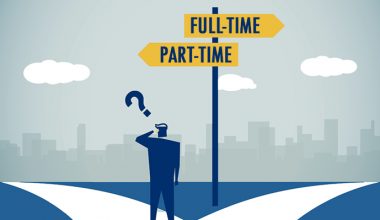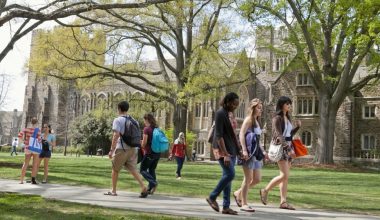Are you wondering what is LEA in education? In education, LEA stands for Local Education Agency. LEA refers to the administrative body responsible for providing educational services to students in a particular geographic area, such as a city, county, or school district.
Understanding the role and functions of the LEA is crucial for parents, teachers, and students as it can impact the quality and accessibility of education in their community.
This article will answer some of the most frequently asked questions about LEAs in education, providing a comprehensive understanding of their role in the education system.

Table of contents
- What does LEA stand for in education?
- What is the role of the Local Education Agency (LEA) in education?
- What is the difference between the LEA and the school district?
- How does the LEA oversee the allocation of resources for education?
- What are the responsibilities of the LEA in managing the budget for education?
- What are the consequences of a poorly functioning LEA for students and their education?
- What qualifications and training are required to work in LEA?
- Frequently Asked Questions
- In Conclusion,
- References
- Recommendations
What does LEA stand for in education?
LEA stands for Local Education Agency in education. It refers to the administrative body responsible for providing educational services to students in a particular geographic area, such as a city, county, or school district.
Check out this article: What is a Passing Grade in 2023 in Colleges | Full Guide
What is the role of the Local Education Agency (LEA) in education?
The Local Education Agency (LEA) plays a vital role in education by ensuring that every student in their area has access to a high-quality education. Some of the critical parts of the LEA include:
- Overseeing the allocation of resources: The LEA is responsible for determining how educational resources, such as funding, personnel, and materials, are allocated within their jurisdiction.
- Managing the budget: The LEA works the budget for education within their area, ensuring that they allocate resources effectively and efficiently.
- Implementing educational policies: The LEA is responsible for implementing state and federal academic procedures within their area, ensuring all schools comply with relevant laws and regulations.
- Collaborating with schools and stakeholders: The LEA works closely with schools, parents, teachers, and other stakeholders to promote student success and improve the quality of education in their area.
- Monitoring educational performance: The LEA is responsible for monitoring the performance of schools and students within their area, identifying areas for improvement, and implementing strategies to address any challenges.
Read this article: What is Academic Probation in 2023 and How to Avoid it?
What is the difference between the LEA and the school district?
The Local Education Agency (LEA) is the administrative body responsible for providing educational services to students in a particular geographic area, such as a city, county, or school district. The school district, on the other hand, is a subset of the LEA that manages one or more schools within that area.
In other words, the LEA oversees the entire educational system within its jurisdiction, while the school district focuses on managing individual schools. The LEA is responsible for allocating resources, managing the budget, and implementing educational policies for all the schools within its area. In contrast, the school district is responsible for managing the day-to-day operations of specific schools.
How does the LEA oversee the allocation of resources for education?
The Local Education Agency (LEA) oversees the allocation of educational resources by analyzing the needs of schools and students in their area, assessing available resources, and developing a plan for allocating them effectively. Here are some of how the LEA oversees the allocation of resources:
- Conducting a needs assessment. The LEA assesses the needs of schools and students within their area, identifying areas where resources are needed most.
- Analyzing available resources. The LEA examines the available resources, such as funding, personnel, and materials. They also determine how those resources can best be allocated to meet the needs of schools and students.
- Developing a plan: The LEA develops a method for allocating resources effectively based on their needs assessment and resource analysis. This plan may include specific strategies for distributing funding, hiring personnel, and providing materials and equipment.
- Monitoring resource allocation: The LEA monitors the allocation of resources. They do this to ensure the effective and efficient usage of these resources. This may involve regular audits or evaluations of schools and programs within their area.
- Adjusting resource allocation as needed. If the needs of schools and students change or new resources become available, the LEA adjusts its resource allocation plan accordingly to ensure that resources get to their maximum effect.
Read also: What is Externship? All Students Need to Know.
What are the responsibilities of the LEA in managing the budget for education?
The Local Education Agency (LEA) has several key responsibilities when managing the budget for education in their area. These include:
- Developing and implementing a budget: The LEA is responsible for creating funding for education within their area and ensuring effective and efficient budget implementation.
- Allocating funding to schools: The LEA is responsible for administering funding to individual schools within their area based on their needs and the available resources.
- Monitoring spending: The LEA monitors spending by schools and programs within their area to ensure that they use resources effectively and comply with relevant laws and regulations.
- Financial support: The LEA may provide financial support to schools and programs within their area, such as grants or loans, to help them meet their budgetary needs.
- Reporting on-budget performance: The LEA regularly says on-budget performance to the state and federal government and stakeholders within their area to ensure transparency and accountability.
Check out this article: Millikin University 2023: Admission Requirements, Scholarships, Tuition.
What are the consequences of a poorly functioning LEA for students and their education?
A poorly functioning LEA (Local Education Agency) can have several negative consequences for students and their education. Some of these consequences are:
Poor academic performance
When an LEA needs to be better functioning, it may not be able to provide the necessary resources, support, and guidance to students, which can result in poor academic performance.
For example, inadequate funding can lead to a lack of quality teachers, an outdated curriculum, and insufficient facilities, all of which can affect students’ learning outcomes.
Limited opportunities
Poorly functioning LEAs may need help to offer students a wide range of educational opportunities. This can limit students’ exposure to different subjects, skills, and experiences that could help them excel academically and personally.
Check out this article: Top Universities For Nursing in the UK | 2023
High dropout rates
Students who feel unsupported or disengaged from their education may be more likely to drop out of school. Poorly functioning LEAs may need to be able to provide the necessary resources and support to keep students engaged and motivated, leading to high dropout rates.
Inadequate preparation for college or career
A poorly functioning LEA may need help to provide students with the skills and knowledge they need to succeed in college or their careers. This can limit students’ opportunities and potential for future success.
Negative impact on mental health
Poor academic performance, limited opportunities, and high dropout rates can negatively impact students’ mental health. Students who struggle academically or feel disconnected from their education may experience stress, anxiety, and depression.
A poorly functioning LEA can have several negative consequences for students and their education. This includes poor academic performance, limited opportunities, high dropout rates, inadequate preparation for college or career, and negative impacts on mental health.
Read this article: Ole Miss Acceptance Rate In 2023: Requirements, Tuition, And Scholarships.
What qualifications and training are required to work in LEA?
The qualifications and training required to work in a Local Education Agency (LEA) can vary depending on the specific role and responsibilities. However, some general requirements and qualifications include the following:
Educational background
Most roles within an LEA require at least a bachelor’s Degree in education, business administration, public administration, or a related field. Some positions may require a master’s Degree, such as superintendent or curriculum coordinator.
Work experience
Experience working in education, government, or public administration is a requirement for positions within an LEA. Experience working in a school district or with children can be particularly relevant.
Read also: 10 Best Universities For History in the U.K. | 2023
Licensure and certification
Some positions within an LEA may require licensure or certification, such as a teaching or administrative credential. These requirements vary by state and by specific position.
Knowledge of education policy
Individuals working in an LEA should understand education policy and regulations at the local, state, and federal levels.
Communication and interpersonal skills
Effective communication and interpersonal skills are essential for working with school administrators, teachers, parents, and other stakeholders.
See also: How to Become a Dialysis Technician in 2023
Leadership skills
Many roles within an LEA require strong leadership skills and the ability to manage and motivate staff. It is also important to develop and implement policies, and make difficult decisions.
In terms of training, LEAs often provide on-the-job training and professional development opportunities for their staff. Additionally, individuals working in an LEA may participate in professional organizations and attend conferences and workshops. This is to stay current on the latest education and public administration trends and practices.
Read this article: How to get interdisciplinary studies Degree in 2023 | Full Guide
Frequently Asked Questions
The Local Education Agency (LEA) is the administrative body responsible for providing educational services to students in a particular geographic area, such as a city, county, or school district. The LEA oversees the allocation of resources, manages the budget, and implements educational policies in their area.
The role of the LEA in education is to ensure that every student in their area has access to a high-quality education. This involves overseeing the allocation of resources, managing the budget, implementing educational policies, and collaborating with schools and other stakeholders to promote student success.
The LEA allocates educational resources based on various factors, including student needs, school enrollment, and budget constraints. They may also receive funding from federal or state programs, which can influence their resource allocation decisions.
The LEA is the administrative body responsible for providing educational services to students in a particular geographic area. At the same time, the school district is a subset of the LEA that manages one or more schools within that area. The LEA oversees the entire educational system within its jurisdiction, while the school district focuses on addressing individual schools.
Parents and teachers can work with the LEA to improve education in their community by attending school board meetings, providing feedback on educational policies, and advocating for resources and programs that support student success. They can also collaborate with the LEA on initiatives such as after-school programs, community outreach, and student support services.
In Conclusion,
Understanding the Local Education Agency (LEA) is essential for ensuring quality education in a particular geographic area. Through the FAQs provided in this article, we have explored the role and functions of the LEA. We also explained its responsibilities for overseeing the allocation of resources, managing the budget, and implementing educational policies.
By providing this information, we hope to have helped parents, teachers, and students gain a deeper understanding of the role of the LEA. Especially their role in education and how it impacts the quality and accessibility of education in their community. Ultimately, by working together with the LEA, we can ensure that all students receive a high-quality education. They can also have the opportunity to reach their full potential.
Read also: When Do AP Scores Come Out In 2023? Full Guide.
References
- https://adayinourshoes.com
- https://awsa.memberclicks.net
- https://www.ctc.ca.gov
- https://www.igi-global.com



